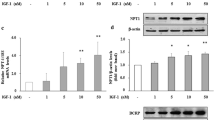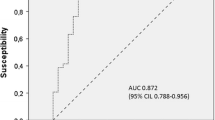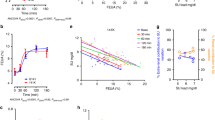Abstract
It has been known for many years that the kidney plays a major role in uric acid homeostasis, as more than 70% of urate excretion is renal. Furthermore, hyperuricemia in gout is most commonly the result of relative urate underexcretion, as the kidney has enormous capacity for urate reabsorption. A clear understanding of the mechanisms of renal handling of urate has been hampered by the differences between humans and animal models. The power of human genetics and genome-wide association studies has now provided new insight into the molecular mechanisms of urate transport by identifying the transporters that have critical roles in urate transport. This review surveys the new evidence for a molecular model of urate transport in the renal proximal tubule and uses these data to refute the popular four-component model for urate transport that has long been in vogue. It also discusses data that help us understand the relation of diuretics to hyperuricemia, losartan-induced uricosuria, variations in uric acid levels in hyperglycemia, and the effects of dairy diets on serum urate levels. In the end, several of these clinical findings are explained, and the remaining gaps in our knowledge will become evident.

Similar content being viewed by others
References
Feig DI, Kang DH, Johnson RJ. Uric acid and cardiovascular risk. N Engl J Med. 2008;359:1811–21.
Mazzali M, Hughes J, Kim YG, Jefferson JA, et al. Elevated uric acid increases blood pressure in the rat by a novel crystal-independent mechanism. Hypertension. 2001;38:1101–6.
Mazzali M, Kanellis J, Han L, Feng L, et al. Hyperuricemia induces a primary renal arteriolopathy in rats by a blood pressure-independent mechanism. Am J Physiol Ren Physiol. 2002;282:F991–997.
Shi Y, Evans JE, Rock KL. Molecular identification of a danger signal that alerts the immune system to dying cells. Nature. 2003;425:516–21.
Maesaka JK, Fishbane S. Regulation of renal urate excretion: a critical review. Am J Kidney Dis. 1998;32:917–33.
Levinson DJ, Sorensen LB. Renal handling of uric acid in normal and gouty subject: evidence for a 4-component system. Ann Rheum Dis. 1980;39:173–9.
Abramson RG, Levitt MF. Use of pyrazinamide to assess renal uric acid transport in the rat: a micropuncture study. Am J Physiol. 1976;230:1276–83.
Podevin R, Ardaillou R, Paillard F, Fontanelle J, et al. Study in man of the kinetics of the appearance of uric acid 2–14 C in the urine. Nephron. 1968;5:134–40.
Gutman AB, Yu T-F. Renal function in gout. With a commentary on the renal regulation of urate excretion, and the role of the kidney in the pathogenesis of gout. Am J Med. 1957;23:600–22.
Gutman AB, Yu TF, Berger L. Tubular secretion of urate in man. J Clin Invest. 1959;38:1778–81.
Praetorius E, Kirk JE. Hypouricemia: with evidence for tubular elimination of uric acid. J Lab Clin Med. 1950;35:856–68.
Matsuo H, Chiba T, Nagamori S, Nakayama A, et al. Mutations in glucose transporter 9 gene SLC2A9 cause renal hypouricemia. Am J Hum Genet. 2008;83:744–51.
Dinour D, Gray NK, Ganon L, Knox AJ, et al. Two novel homozygous SLC2A9 mutations cause renal hypouricemia type 2. Nephrol Dial Transplant. 2011.
Dinour D, Gray NK, Campbell S, Shu X, et al. Homozygous SLC2A9 mutations cause severe renal hypouricemia. J Am Soc Nephrol. 2010;21:64–72.
Steele TH. Urate secretion in man: the pyrazinamide suppression test. Ann Intern Med. 1973;79:734–7.
Anzai N, Ichida K, Jutabha P, Kimura T, et al. Plasma urate level is directly regulated by a voltage-driven urate efflux transporter URATv1 (SLC2A9) in humans. J Biol Chem. 2008;283:26834–8.
Steele TH, Oppenheimer S. Factors affecting urate excretion following diuretic administration in man. Am J Med. 1969;47:564–74.
Whitehead TP, Jungner I, Robinson D, Kolar W, et al. Serum urate, serum glucose and diabetes. Ann Clin Biochem. 1992;29:159–61.
Skeith MD, Healey LA, Cutler RE. Urate excretion during mannitol and glucose diuresis. J Lab Clin Med. 1967;70:213–20.
Bailey CJ, Gross JL, Pieters A, Bastien A, et al. Effect of dapagliflozin in patients with type 2 diabetes who have inadequate glycaemic control with metformin: a randomised, double-blind, placebo-controlled trial. Lancet. 375: 2223–33.
Dalbeth N, Wong S, Gamble GD, Horne A, et al. Acute effect of milk on serum urate concentrations: a randomised controlled crossover trial. Ann Rheum Dis. 69:1677–82.
Choi HK, Atkinson K, Karlson EW, Willett W, et al. Purine-rich foods, dairy and protein intake, and the risk of gout in men. N Engl J Med. 2004;350:1093–103.
Dolaeus J, Stephens W. Dolaeus Upon the Cure of the Gout by Milk-Diet. To which is prefixed an Essay upon diet. By William Stephens, M.D. F.R.S. Fellow of the King and Queen’s College of Physicians in Ireland, Physician to the Royal Hospital, and Botany Lecturer in the University of Dublin. Printed for J. Smith and W. Bruce on the Blind-Key in Dublin: And Sold by John Osborn and Thomas Longman in Pater-noster-Row, 1732.
Burnier M, Roch-Ramel F, Brunner HR. Renal effects of angiotensin II receptor blockade in normotensive subjects. Kidney Int. 1996;49:1787–90.
Edwards RM, Trizna W, Stack EJ, Weinstock J. Interaction of nonpeptide angiotensin II receptor antagonists with the urate transporter in rat renal brush-border membranes. J Pharmacol Exp Ther. 1996;276:125–9.
Rafey MA, Lipkowitz MS, Leal-Pinto E, Abramson RG. Uric acid transport. Curr Opin Nephrol Hypertens. 2003;12:511–6.
Abramson RG, Lipkowitz MS. Evolution of the uric acid transport mechanisms in vertebrate kidney. In: Kinne RKH, editor. Basic principles in transport, vol. 3. Basel: Karger; 1990. p. 115–53.
Wu XW, Muzny DM, Lee CC, Caskey CT. Two independent mutational events in the loss of urate oxidase during hominoid evolution. J Mol Evol. 1992;34:78–84.
Wu X, Wakamiya M, Vaishnav S, Geske R, et al. Hyperuricemia and urate nephropathy in urate oxidase-deficient mice. Proc Natl Acad Sci U S A. 1994;91:742–6.
Enomoto A, Kimura H, Chairoungdua A, Shigeta Y, et al. Molecular identification of a renal urate anion exchanger that regulates blood urate levels. Nature. 2002;417:447–52.
Guggino SE, Aronson PS. Paradoxical effects of pyrazinoate and nicotinate on urate transport in dog renal microvillus membranes. J Clin Invest. 1985;76:543–7.
Guggino SE, Martin GJ, Aronson PS. Specificity and modes of the anion exchanger in dog renal microvillus membranes. Am J Physiol. 1983;244:F612–21.
Jang WC, Nam YH, Ahn YC, Park SM, et al. G109T polymorphism of SLC22A12 gene is associated with serum uric acid level, but not with metabolic syndrome. Rheumatol Int. 2011.
Dinour D, Bahn A, Ganon L, Ron R, et al. URAT1 mutations cause renal hypouricemia type 1 in Iraqi Jews. Nephrol Dial Transplant. 2011;26:2175–81.
Kenny EE, Kim M, Gusev A, Lowe JK, et al. Increased power of mixed models facilitates association mapping of 10 loci for metabolic traits in an isolated population. Hum Mol Genet. 2011;20:827–39.
Kolz M, Johnson T, Sanna S, Teumer A, et al. Meta-analysis of 28,141 individuals identifies common variants within five new loci that influence uric acid concentrations. PLoS Genet. 2009;5:e1000504.
Komoda F, Sekine T, Inatomi J, Enomoto A, et al. The W258X mutation in SLC22A12 is the predominant cause of Japanese renal hypouricemia. Pediatr Nephrol. 2004;19:728–33.
Hediger MA. Kidney function: gateway to a long life? Nature. 2002;417:393–5.
Dehghan A, Kottgen A, Yang Q, Hwang SJ, et al. Association of three genetic loci with uric acid concentration and risk of gout: a genome-wide association study. Lancet. 2008;372:1953–61.
Li S, Sanna S, Maschio A, Busonero F, et al. The GLUT9 gene is associated with serum uric acid levels in Sardinia and Chianti cohorts. PLoS Genet. 2007;3:e194.
Wallace C, Newhouse SJ, Braund P, Zhang F, et al. Genome-wide association study identifies genes for biomarkers of cardiovascular disease: serum urate and dyslipidemia. Am J Hum Genet. 2008;82:139–49.
Phay JE, Hussain HB, Moley JF. Cloning and expression analysis of a novel member of the facilitative glucose transporter family, SLC2A9 (GLUT9). Genomics. 2000;66:217–20.
Keembiyehetty C, Augustin R, Carayannopoulos MO, Steer S, et al. Mouse glucose transporter 9 splice variants are expressed in adult liver and kidney and are up-regulated in diabetes. Mol Endocrinol. 2006;20:686–97.
Augustin R, Carayannopoulos MO, Dowd LO, Phay JE, et al. Identification and characterization of human glucose transporter-like protein-9 (GLUT9): alternative splicing alters trafficking. J Biol Chem. 2004;279:16229–36.
Caulfield MJ, Munroe PB, O’Neill D, Witkowska K, et al. SLC2A9 is a high-capacity urate transporter in humans. PLoS Med. 2008;5:e197.
Vitart V, Rudan I, Hayward C, Gray NK, et al. SLC2A9 is a newly identified urate transporter influencing serum urate concentration, urate excretion and gout. Nat Genet. 2008;40:437–42.
Preitner F, Bonny O, Laverriere A, Rotman S, et al. Glut9 is a major regulator of urate homeostasis and its genetic inactivation induces hyperuricosuria and urate nephropathy. Proc Natl Acad Sci U S A. 2009;106:15501–6.
Mobasheri A, Neama G, Bell S, Richardson S, et al. Human articular chondrocytes express three facilitative glucose transporter isoforms: GLUT1, GLUT3 and GLUT9. Cell Biol Int. 2002;26:297–300.
Yang Q, Kottgen A, Dehghan A, Smith AV, et al. Multiple genetic loci influence serum urate levels and their relationship with gout and cardiovascular disease risk factors. Circ Cardiovasc Genet. 2010;3:523–30.
Woodward OM, Kottgen A, Coresh J, Boerwinkle E, et al. Identification of a urate transporter, ABCG2, with a common functional polymorphism causing gout. Proc Natl Acad Sci U S A. 2009;106:10338–42.
Yamane S, Reddi AH. Induction of chondrogenesis and superficial zone protein accumulation in synovial side population cells by BMP-7 and TGF-beta1. J Orthop Res. 2008;26:485–92.
Iharada M, Miyaji T, Fujimoto T, Hiasa M, et al. Type 1 sodium-dependent phosphate transporter (SLC17A1 protein) is a Cl(−)-dependent urate exporter. J Biol Chem. 285:26107–13.
Jutabha P, Anzai N, Kitamura K, Taniguchi A, et al. Human sodium phosphate transporter 4 (hNPT4/SLC17A3) as a common renal secretory pathway for drugs and urate. J Biol Chem. 285:35123–32.
Eraly SA, Vallon V, Rieg T, Gangoiti JA, et al. Multiple organic anion transporters contribute to net renal excretion of uric acid. Physiol Genom. 2008;33:180–92.
Xu G, Bhatnagar V, Wen G, Hamilton BA, et al. Analyses of coding region polymorphisms in apical and basolateral human organic anion transporter (OAT) genes [OAT1 (NKT), OAT2, OAT3, OAT4, URAT (RST)]. Kidney Int. 2005;68:1491–9.
Ekaratanawong S, Anzai N, Jutabha P, Miyazaki H, et al. Human organic anion transporter 4 is a renal apical organic anion/dicarboxylate exchanger in the proximal tubules. J Pharmacol Sci. 2004;94:297–304.
Hyink DP, Rappoport JZ, Wilson PD, Abramson RG. Expression of the urate transporter/channel is developmentally regulated in human kidneys. Am J Physiol Ren Physiol. 2001;281:F875–886.
Lipkowitz MS, Leal-Pinto E, Rappoport JZ, Najfeld V, et al. Functional reconstitution, membrane targeting, genomic structure, and chromosomal localization of a human urate transporter. J Clin Invest. 2001;107:1103–15.
Leal-Pinto E, Cohen BE, Lipkowitz MS, Abramson RG. Functional analysis and molecular model of the human urate transporter/channel, hUAT. Am J Physiol Ren Physiol. 2002;283:F150–163.
Lipkowitz MS, Leal-Pinto E, Cohen BE, Abramson RG. Galectin 9 is the sugar-regulated urate transporter/channel UAT. Glycoconj J. 2004;19:491–8.
Van Aubel RA, Smeets PH, van den Heuvel JJ, Russel FG. Human organic anion transporter MRP4 (ABCC4) is an efflux pump for the purine end metabolite urate with multiple allosteric substrate binding sites. Am J Physiol Ren Physiol. 2005;288:F327–333.
Gopal E, Umapathy NS, Martin PM, Ananth S, et al. Cloning and functional characterization of human SMCT2 (SLC5A12) and expression pattern of the transporter in kidney. Biochim Biophys Acta. 2007;1768:2690–7.
Anzai N, Miyazaki H, Noshiro R, Khamdang S, et al. The multivalent PDZ domain-containing protein PDZK1 regulates transport activity of renal urate-anion exchanger URAT1 via its C terminus. J Biol Chem. 2004;279:45942–50.
Jutabha P, Anzai N, Endou H. Interaction of the multivalent PDZ damain protein PDZK1 with type 1 sodium-phosphate cotransporter (NPT1). J Am Soc Nephrol. 2005;16:350A.
Miyazaki H, Anzai N, Ekaratanawong S, Sakata T, et al. Modulation of renal apical organic anion transporter 4 function by two PDZ domain-containing proteins. J Am Soc Nephrol. 2005;16:3498–506.
Halestrap AP, Price NT. The proton-linked monocarboxylate transporter (MCT) family: structure, function and regulation. Biochem J. 1999;343(Pt 2):281–99.
Jutabha P, Anzai N, Kitamura K, Taniguchi A, et al. Human sodium phosphate transporter 4 (hNPT4/SLC17A3) as a common renal secretory pathway for drugs and urate. J Biol Chem. 2011;285:35123–32.
Dalbeth N, Wong S, Gamble GD, Horne A, et al. Acute effect of milk on serum urate concentrations: a randomised controlled crossover trial. Ann Rheum Dis. 2010;69:1677–82.
Disclosure
No potential conflicts of interest relevant to this article were reported.
Author information
Authors and Affiliations
Corresponding author
Rights and permissions
About this article
Cite this article
Lipkowitz, M.S. Regulation of Uric Acid Excretion by the Kidney. Curr Rheumatol Rep 14, 179–188 (2012). https://doi.org/10.1007/s11926-012-0240-z
Published:
Issue Date:
DOI: https://doi.org/10.1007/s11926-012-0240-z




